Back in August 2019, Rand Fiskin, the CEO and co-founder of SparkToro, wrote a largely cited post on no-click searches.
In Less than Half of Google Searches Now Result in a Click, Fishkin wrote:
“We’ve passed a milestone in Google’s evolution from search engine to walled-garden. In June of 2019, for the first time, a majority of all browser-based searches on Google.com resulted in zero-clicks.”
Fishkin used clickstream data from Jumpshot to document his findings.
Unfortunately, Avast shut down Jumpshot in January 2020. In the absence of new data, follow-on stories dried up quickly.
In fact, Loren Baker wrote one of the last ones in early March 2020. In Zero-Click Searches: How to Get Back Your Lost Google Traffic, he summarized Search Engine Journal’s sponsored webinar on the topic with Andreas Dzumla, CEO and co-founder at Longtail UX.
Then, in mid-March 2020, the attention of the vast majority of SEO professionals – including me – shifted to responding to the rapid and unpredictable changes in search behavior triggered by the Coronavirus pandemic.
Advertisement
Continue Reading Below
So, I confess that I’d forgotten about no-click searches until I watched last month’s Searchmetrics webcast, SEO Report: 2020 Year-End Review.
The rise of no-click searches was the fourth of five topics covered. But, the webcast featured new data from Searchmetrics, which indicates that this story has legs (i.e., you’ll probably still be reading about it in a year’s time).
According to Searchmetrics, 48% of the searches in the eCommerce industry are no-click, 32% are organic, and 20% are paid.
And in the Media industry, in particular, 63% of searches are no-click, 33% are organic, and only 4% are paid.
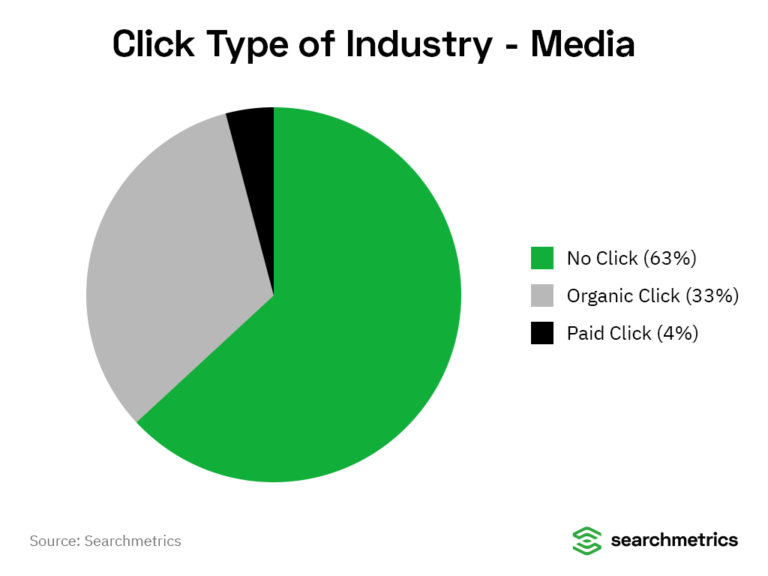
What Does the Rise of No-Click Searches Mean to SEO Professionals?
Tyson Stockton, the VP of Client & Account Management US at Searchmetrics, said in an email to me:
Advertisement
Continue Reading Below
“As Google continues to increase the various SERP features, they are controlling more of the user experience and keeping users on the SERPs rather than clicking through to the respective URLs. As SEOs, we need to evolve how we measure success and not just measure traffic and rankings.”
He added,
“We still need to report on these metrics, but we need to further expand to the impressions generated from being present in these SERP features. This is simply a matter of tracking what elements you are present in and the search volume of those terms. By doing this, we expand reporting to capture overall impression (beyond what Google Search Console provides), rankings (with SERP features), traffic, and conversions. By establishing a complete SEO reporting funnel, we are able to tell a more accurate story to our respective organizations on how we are competing in search.”
In other words, if you currently measure SEO results using clicks on organic search results, you have two options:
- Learn to measure SEO results in new ways.
- Update your resume and start looking for a new career in a related field.
Before you flush your optimization skills and experience down the toilet, I’d strongly recommend that you take a serious look at learning new ways to measure SEO results.
Hey, it’s worth a shot.
Why?
Because getting a click on an organic search result is still a valid metric. And you already know how to use Google Analytics to measure acquisition, behavior, and conversions from this channel.
But, if you re-read Baker’s article on zero-click searches, you’ll also be reminded that:
Advertisement
Continue Reading Below
Let’s dig a little deeper into each of these areas to see if there are new ways to measure SEO results.
Keyword ‘(Not Provided)’ Forced Many SEO Professionals to Turn to Third-Party Tools for This Data
Like many other SEO pros, I was not a happy camper when Google Analytics stopped reporting which keywords provided 97% of organic search traffic back in September 2013.
That’s when I started using SpyFu – initially to replace the data I was no longer getting from Google Analytics. However, I soon began using their SEO Recon Files before starting new SEO training programs to set a baseline. Then I’d periodically get updates to track an organization’s SEO results.
For example, I got a baseline report on Dec. 20, 2017, for Dickinson College. It showed me that:
- “edu” showed up in the top 50 search results on Google for 6,000 different keywords.
- 3,000 unique pages on Dickinson.edu appeared in the top 50 results of at least one search.
- Their site should be getting 29,000 clicks per month from their organic placements on Google.
- If they had to buy all those organic clicks via Google Ads, that would cost $29,000 per month.
- Relative to their top 5 competitors, Dickinson.edu had a 13% share of the organic search traffic.
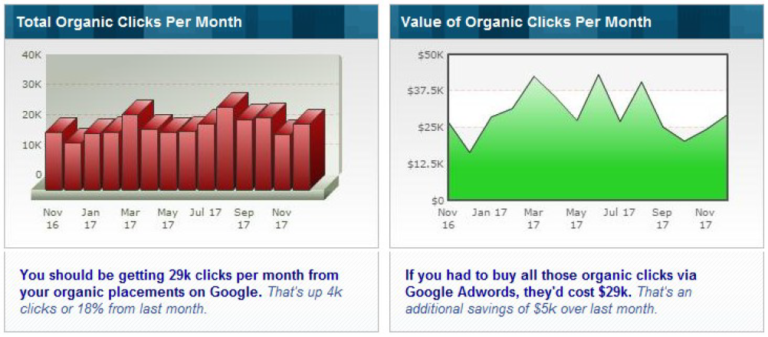
I asked Margee Ensign, the President of Dickinson College, for permission to share an update of her SEO results, and she said they’d be “thrilled and honored” to do that.
Advertisement
Continue Reading Below
So, here’s what the updated report on Dec. 20, 2020, showed:
- “edu” showed up in the top 50 search results on Google for 15,000 different keywords.
- 5,000 unique pages on Dickinson.edu appeared in the top 50 results of at least one search.
- Their site should be getting 104,000 clicks per month from their organic placements on Google.
- If they had to buy all those organic clicks via Google Ads, that would cost $108,000 per month.
- Relative to their top 5 competitors, Dickinson.edu had 30% share of the organic search traffic.
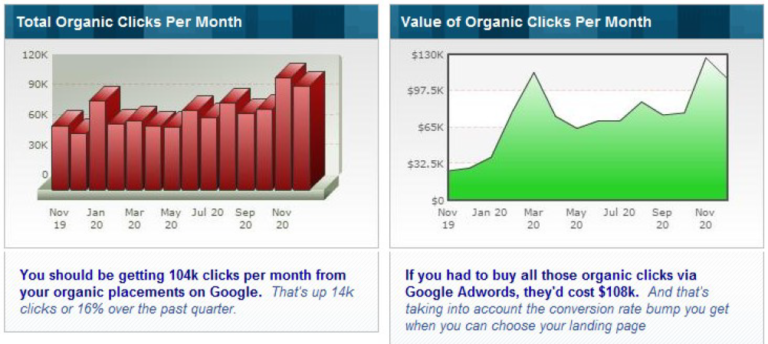
By the way, the images above show just two of the five metrics that we track.
Increasing total organic clicks per month from 29,000 to 104,000 and the value of organic clicks from $29,000 to $108,000 per month are just two new ways to measure SEO results.
I didn’t show the charts for market share, because it wouldn’t be prudent to disclose the top 5 competitors of the nationally recognized and highly selective liberal arts college.
Advertisement
Continue Reading Below
However, increasing Dickinson’s share of organic search traffic from 13% to 30% is a third new way to measure SEO results.
Up to 60% of ‘Direct’ Traffic to ‘Long’ URLs Is Actually Organic Search Traffic
You probably shouldn’t attempt to repeat Groupon’s risky experiment on your website.
Why not?
Because they completely deindexed their site for about six hours.
What you can do is borrow part of Groupon’s methodology and examine your direct traffic to landing pages with “long” URLs.
In other words, exclude your home page, where direct traffic is actually direct traffic.
You can do this in Google Analytics without any potential danger by going to Acquisition, clicking on All Traffic Channels, and then clicking on Direct. The default view will show you data on Acquisition, Behavior, and Conversions by landing page.
I did this recently using data in the Google Analytics demo account, which comes from Google’s Official Merchandise Store, a typical ecommerce site that sells Google-branded merchandise.
Advertisement
Continue Reading Below
For Direct traffic, 33.9% of users, 37.1% of new users, 35.4% of sessions, 37.3% of the transactions, and 35.9% of the revenue came from the home page in 2020.
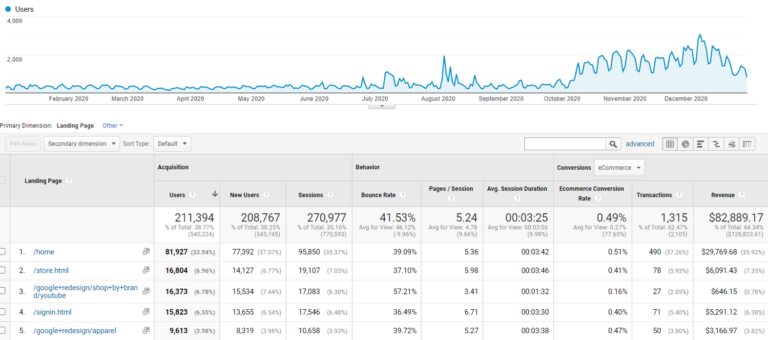
Robertson Marketing, which operates the Google Merchandise Store, could make the case that up to 62.7% of the transactions and 64.1% of the site’s revenue from “Direct” traffic to “long” URLs should be attributed to organic search traffic.
This would boost the number of transactions from organic search traffic from 501 to a total of 1,326 as well as boosting the total revenue from organic search from $27,468 to a total of $80,600. This is another new way that you could measure SEO results.

Search Console Provides Some Useful Information, But…
It’s nice that Search Console provides data on the average search position, impressions, clicks, and click-through rate (CTR) for the top 5,000 search queries.
Advertisement
Continue Reading Below
However, like Oliver Twist, I would like to make a modest request: “Please sir, I want some more.”
For example, it would be wonderful if the Search Console connected data in the Queries Report to transactions and revenue for ecommerce sites, or to goal conversions and goal value for other sites.
Why do I think this would help nourish SEO professionals?
I’ve been optimizing press releases since 2003. And I’ve used Google’s Campaign URL Builder tool to add campaign parameters to URLs in our press releases to track our results in Google Analytics.
For example, I used this technique to test an unoptimized multimedia release vs. an optimized multimedia release for Rutgers Business School Executive Education (RBSEE) in October 2015. Both releases announced the same new Mini-MBA program in Digital Supply Chain Management.
Two hours after crossing the wire, the unoptimized release had 151 release views and 1 tweet about the news by a person with 924 followers.
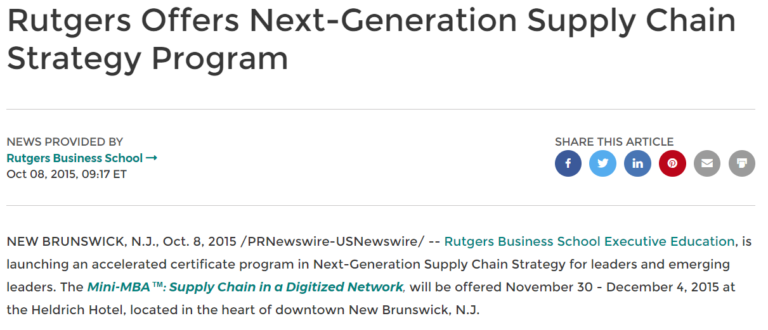
Then, from Oct. 8 to Nov. 30, 2015, the unoptimized release generated 12 sessions by 9 new users on RBSEE’s website.
Advertisement
Continue Reading Below
A full-text copy of the unoptimized release posted on MarketWatch generated 12 sessions by 6 new users, and on Yahoo News generated 11 sessions by 11 new users.
Combined, the three versions of the unoptimized release generated a total of 35 sessions by 26 new users.
By comparison, the optimized release had 886 release views, 146 multimedia views, and 29 link clicks two hours after crossing the wire.
The optimized release also had 19 tweets about the news, including ones by @debraruh with 111,000 followers, @edaccessible with 65,400 followers, and @TheIoT with 40,100 followers.
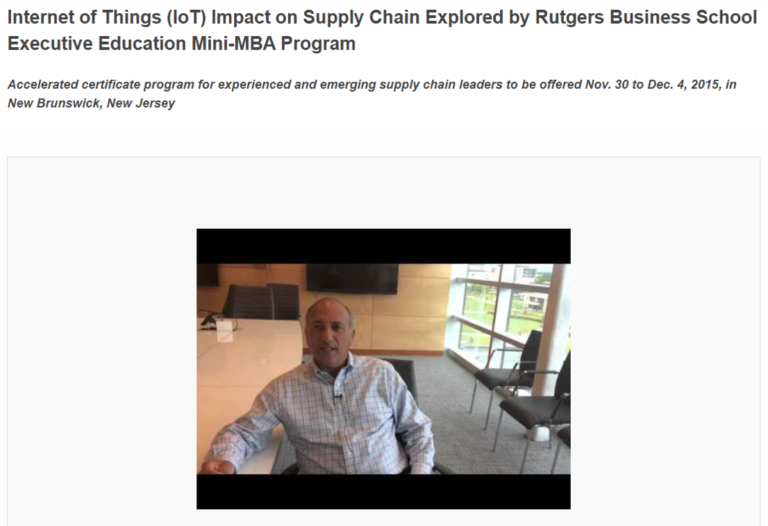
From Oct. 22 to Nov. 30, 2015, the optimized release generated 96 sessions by 67 new users to RBSEE’s website.
Advertisement
Continue Reading Below
I would have been able to tell Jackie Scott, the global program director of RBSEE, that the optimized release had generated 5.9 times more release views and 19 times more tweets as well as 8.7 times more sessions by 2.6 times more new users than the unoptimized release.
Because the cost of optimizing and distributing a multimedia release was $2,323, this would have been nice, but it probably wouldn’t have helped me to get another portion of gruel if I’d nervously asked, “Please, Ma’am, I want some more.”
However, the campaign parameters in the URLs of the optimized release also enabled me to report that it had generated 6 registrations at $4,995 per participant, or $29,970 in incremental revenue. In other words, the optimized multimedia release generated 12.9 times more revenue than it cost.
And this is yet another new way that you could also use to measure SEO results.
If Search Console connected data in the Queries Report to transactions and revenue for ecommerce sites or to goal conversions and goal value for other sites.
Advertisement
Continue Reading Below
What’s the Benefit of Getting Impressions or Visibility in a No-Click Search?
Measuring the economic value of a click on an organic search result will buy you some time to deal with the elephant in the room: Half to two-thirds of the searches in your industry don’t generate a click.
So, what’s the benefit of getting impressions or visibility in a no-click search?
This may be a novel problem for SEO pros, but it is a classic problem for PR people.
Before I got into SEO in 2002, I was the director of corporate communications at Lotus Development Corporation in the late 1980s as well as the director of corporate communications at Ziff-Davis in the 1990s.
That’s when I started using surveys to measure the benefit of getting impressions and visibility from publicity.
And SEO professionals can use an updated version of this 35-year-old approach to PR measurement today.
For example, you can survey a representative sample of your recent customers or target audience and ask them if they’ve seen the following in search results during the last two days:
Advertisement
Continue Reading Below
- Featured snippets.
- Rich sippets.
- Local 3-Packs.
- Images in carousels.
- Videos in carousels.
- Top stories in carousels.
- None of the above.
Then, you can ask respondents questions like:
- Have you heard of [brand/store/product/service]?
- Which of the following comes to mind first when you think of [brand/store/product/service]?
- Will you buy/consider [brand/store/product/service] the next time you shop for SEO?
- Will you recommend [brand/store/product/service] to a friend?
This can provide you with detailed insights into the influence that no-click searches have on the way people feel about your brand, store, product, or service.
And, because a percentage of respondents will answer “none of the above” to the first question, you will be able to compare responses from people who haven’t seen carousels or boxes in their search results with similar people who did see them. That will enable you to measure the “brand lift” of no-click searches.
Advertisement
Continue Reading Below
When I commissioned research firms to conduct these kinds of surveys 30 to 35 years ago, they cost $3,500 to $4,000 and took several weeks to provide me with results. Today I can use:
- Google Forms to survey customers for free.
- Google Opinion Rewards to survey users of iOS devices running versions 10.0 and higher for $0.10 to $1.00 per completed survey.
- Google Surveys to survey consumers for $0.10 to a minimum of $3.00 per completed response for a survey with screening questions and a maximum of 10 questions.
For the Rutgers School of Management and Labor Relations (SMLR), I started a survey with a screening question and a total of eight questions on a Friday in early January 2019 and had results to report to the dean at a meeting on Monday. It cost $540.
The findings helped Debbie Vogel, SMLR’s Director of Marketing and Communications, to optimize the landing page and me to optimize a multimedia press release announcing a new online Master’s program.
In addition, the pre-launch survey provided a baseline that enabled me to conduct a post-launch survey that showed:
- The percentage of respondents who said they were “familiar with” Rutgers University had increased from 8% pre-launch to 18.5% post-launch.
- The percentage of respondents who said they were “very likely” to recommend Rutgers to a friend or colleague had increased from 7% pre-launch to 19.0% post-launch.
Advertisement
Continue Reading Below
And this is yet another new way that you could measure SEO results if you can persuade the decision-makers at your organization or clients to spend $1,080 to conduct two Google Surveys before and after major campaigns.
Is It Time to Update Your Resume & Start Looking for a New Career in a Related Field?
Now, all of these new ways of measuring SEO results should be able to help you to weather the storm caused by the large percentage of no-click searches in many industries.
However, if you step back and analyze your options, then you’ll also discover which related field may offer you a promising new career if you need to update your resume at some point down the road.
It’s digital analytics.
The average salary for an analytics manager is $113,341 per year in the United States and $9,000 cash bonus per year, according to Indeed. By comparison, the average salary for an SEO manager is $81,030 per year in the United States.
Advertisement
Continue Reading Below
So, whether SEO pros select Option A or Option B, learning to measure SEO results in new ways is going to be their best bet.
More Resources:
Image Credits
All screenshots taken by author, January 2021


